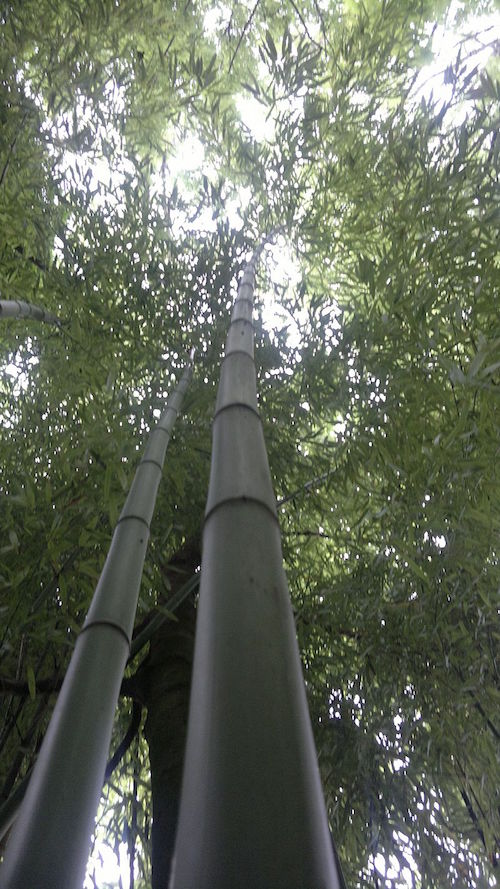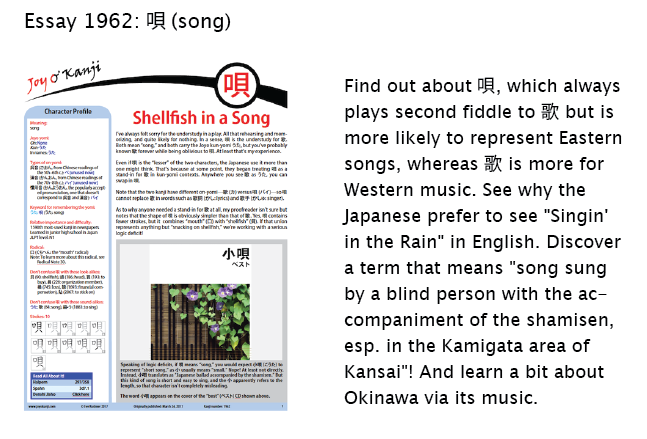A Year Like Bamboo
Last weekend, my language partner Kensuke couldn't talk on our regularly scheduled day (my Saturday, his Sunday), but he happened to have a holiday on his Monday, so we shifted our Skype chat accordingly. Once we had begun the conversation, the first thing I needed to know was which holiday Japan was celebrating. As I learned, it's known as follows:
春分の日 (しゅんぶんのひ: Vernal Equinox Holiday) spring + division + day
The breakdown tells us that the holiday divides winter from spring. But, I asked, isn't that the purpose of another holiday in early February? I'm talking about this one:
節分 (せつぶん: Setsubun, the last day of winter in the traditional Japanese calendar) season + division
Kensuke had no idea how the two holidays differed, and we spent an hour discussing it. The question is quite hard even for native speakers, and on top of that, the Japanese Wikipedia information he copied for me about 春分 and 節分 was tough for me to grasp.
A few keywords stood out in that text:
前日 (ぜんじつ: previous day; day before; eve; prior day) before + day
節気 (せっき: 24 divisions of the lunisolar year)
season + the source of seasonal change
春分点 (しゅんぶんてん: the vernal equinox) spring + division + point
Note that 分 has made three appearances, meaning "division" in every case.
And 節 has appeared twice. That kanji strangely excites me. Here are its primary meanings, to say nothing of lesser ones: "joint, node; season of the year; time; festival; paragraph; tune; to economize, be moderate; moral integrity; bamboo tally used in ancient China." The plethora of definitions is intimidating, but almost all have to do with bamboo and its prominent nodes:

Note the "bamboo" radical 竹 atop 節. That's significant. Henshall explains that the 即 below it typically means "namely" but acts phonetically in this case to express "division" and to lend an idea of "order." So 節 represents an "ordered division of bamboo," referring to the orderly arrangement of its nodes and sections. This concept gave rise to the wide range of definitions.
Imagine the calendar year stretching out like a stalk of bamboo. In a Japanese year, that stalk has 24 sections (each month divided into two), bringing us back to this term:
節気 (せっき: 24 divisions of the lunisolar year)
season + the source of seasonal change
A longer term is synonymous:
二十四節気 (にじゅうしせっき: 24 divisions of the lunisolar year)
24 (1st 3 kanji) + divisions of the lunisolar year (last 2 kanji)
You may be wondering what a "lunisolar" year is. I wrestled with that in essay 1927 on 暦 (calendar, almanac), explaining that what English speakers call “lunar” calendars are often actually “lunisolar” calendars. With a lunar calendar, the months and seasons don’t stay aligned. Jews and Muslims use lunar calendars, and their holidays are always sliding around within the Western calendar because no one tries to sync those lunar calendars with solar ones. By contrast, a lunisolar calendar is a lunar calendar at base, but periods of time have been added so that seasons stay aligned with the solar calendar. For example, padding the calendar in a certain way ensures that the fifth lunar month is always in summer.
Let's go back to the 24 divisions of the lunisolar year. The Virgo in me loves the idea of the 24 divisions. It's as if 12 monthly boundaries in time weren't enough to keep all the days tidy. Better to have 24. Then time (and by extension life itself) can truly be under firm control. (If only!)
All the same, 節分 really just divides winter from spring, which means that we're back to a very loose concept of the year as having four quarters. Likewise, 春分点 marks the point (点) at which the day is as long as the night (thanks to the shifting position of the equator). As we have only two equinoxes (the other falling on my birthday!), one could conceive of 春分点 as dividing the year into two halves. Time is on the loose again, running amok! Anything could happen!
Speaking of a lack of precision, I was surprised to learn that 節分 does not fall at the precise beginning of spring. That start date is represented by yet another word:
立春 (りっしゅん: first day of spring, according to the traditional lunisolar calendar) start + spring
Instead, 節分 comes the day before that first day, which is why 前日 (ぜんじつ: previous day; day before; eve; prior day; preceding day) played an important role in the Wikipedia text. Why should the eve be a bigger celebration than the actual day of something? I have no idea.
Here's one more surprise, something I've never considered before. The term 節分 is so vague and generic that it has no apparent connection to February. Breaking down as season + division, 節分 could have fallen in any of four places on the calendar. Originally, it did; the Japanese were the ones who associated 節分 with the beginning of spring.
I love the characters in that term and the idea of equating bamboo with time, both of them stretching out infinitely and regenerating like crazy, so I'm glad it's called what it is.
By the way, there's a new essay out! Here's a sneak preview:

Have a great weekend! (Which plant signifies the separation between the weekdays and the weekend?!)
*****
Did you like this post? Share the love! It's easy:


Comments